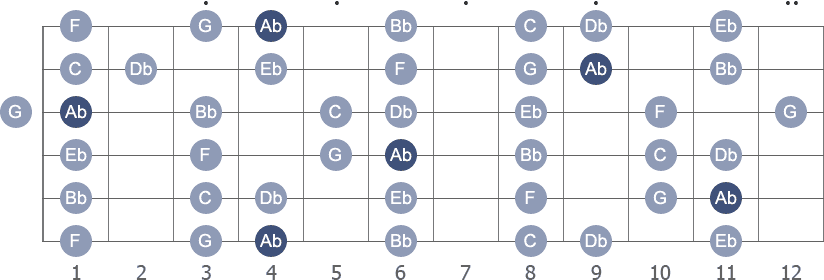

In a crude sense we have already done this when we found that the major scale is made up of the 'interval' sequence tone-tone-semitone-tone-tone-tone-semitone. We could consider the note row in terms of 'intervals' rather than 'degrees'. We set out below the scale degrees for every major key. The 7th degree of the scale (the Leading Note) is also known as the subtonic, which happens to be a 2nd below the tonic while the supertonic is a 2nd above the tonic. Similarly, for the mediant, except that it is a 3rd above and below the tonic rather than a fifth. So, for example, when C is the tonic, a 5th above the tonic is G (dominant) and the note a 5th below the tonic is F. The dominant is a fifth above the tonic while the subdominant is a fifth below the tonic. The Latin prefixes super-, meaning 'above' and sub-, meaning 'below' feature prominently in the naming of the degrees of the scale. The name subtonic is reserved for the flattened or lowered 'leading note', so that the subtonic is a semitone or half step lower than the leading note (or leading tone) Theorists make a distinction between 'leading note' (leading tone) and 'subtonic'. The note a semitone (half step) or tone (whole step) below the tonic, leads to the tonic. The note between the subdominant and tonic (the middle of a perfect 5th counting down from the tonic) The note between the tonic and dominant above (the middle of a perfect 5th counting up from the tonic) The degrees of the scale have their own names. If we move to another key note, the note row will be composed of different notes but the relationship between the notes in the row will remain unchanged. If we take the major scale of C, the key note C is called the first degree of the scale, D is the second degree of the scale, and so on. In lesson 8 we first mentioned the degrees of the scale.

The Tritone :: Compound Intervals :: Table of Intervals Johann Sebastian Bach (1685-1750) German composerĭegrees of the Scale :: Melodic & Harmonic Intervals :: Unisons & Octaves :: Diatonic Intervals :: Chromatic Intervals You have only to hit the right note at the right time, and instrument plays itself. Previous lesson :: next lesson :: contents :: index :: manuscript paper :: comments or queries? To use the menu you must first enable javascript


 0 kommentar(er)
0 kommentar(er)
